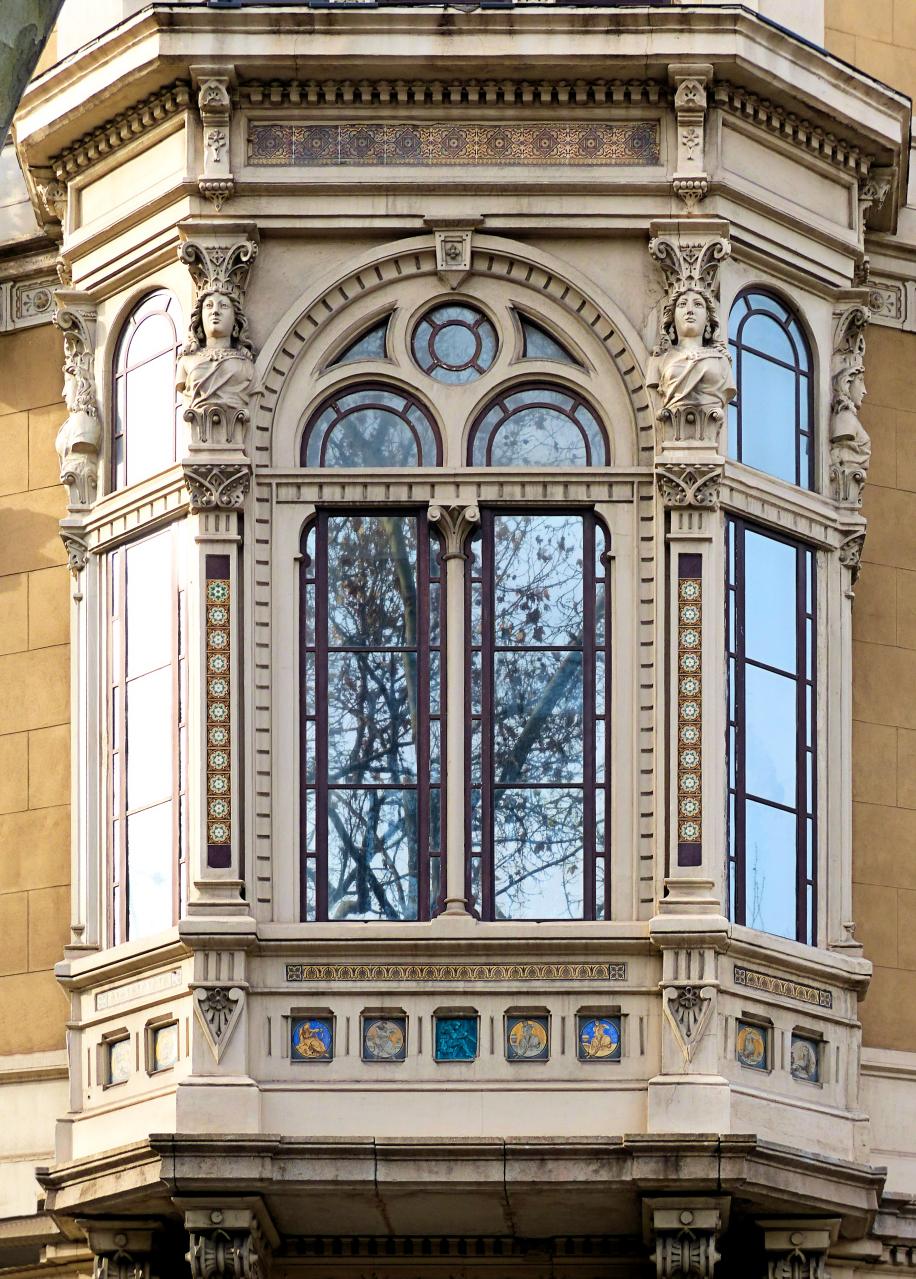#1621. Luxurious Neo-Renaissance Bay Window Facade with Caryatids and Stained Glass
Before us is a magnificent example of a bay window in the Neo-Renaissance style — an architectural solution that simultaneously increases the interior space and gives the building's facade an exquisite, aristocratic character. This multi-faceted structure demonstrates the highest level of decorative craftsmanship from the late 19th to early 20th century.
The facade is richly adorned with elements of the classical order system. Note the Corinthian capitals of the columns, decorative brackets, and meticulously crafted cornice with dentils. Particularly expressive are the sculptural female heads serving as caryatids — they support the upper part of the bay window and give the structure a special monumentality.
The glazing presents a combination of rectangular and arched windows with fine muntin divisions. The upper tier of the bay window is decorated with exquisite stained glass elements in the form of an oculus and paired semi-circular windows. Along the lower perimeter are colored majolica inserts, while the vertical spans are decorated with ornamental ceramic panels.
When designing modern facades, one can creatively adapt classical techniques for bay window design: using rhythmic articulation, decorative brackets, or stylized ornamental inserts. Even in simplified form, such elements can become an expressive dominant feature of a private home, giving it individuality and architectural nobility.
